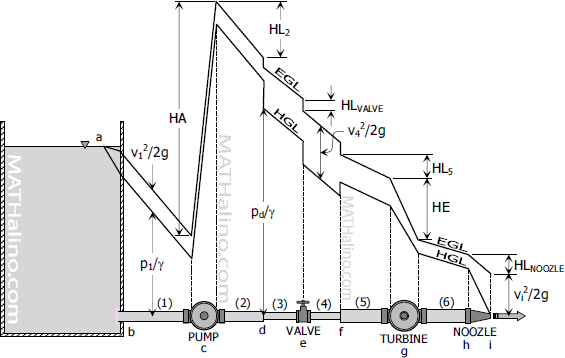Energy and Head of Flow
Energy is defined as ability to do work. Both energy and work are measured in Newton-meter (or pounds-foot in English). Kinetic energy and potential energy are the two commonly recognized forms of energy. In a flowing fluid, potential energy may in turn be subdivided into energy due to position or elevation above a given datum, and energy due to pressure in the fluid. Head is the amount of energy per Newton (or per pound) of fluid.
Kinetic Energy and Velocity Head
Kinetic energy is the ability of a mass to do work by virtue of its velocity. The kinetic energy of a mass M having a velocity v is ½Mv2. Since M = W/g,
$\text{Velocity head} = \dfrac{K.E.}{W} = \dfrac{v^2}{2g}$
Elevation Energy and Elevation Head
In connection to the action of gravity, elevation energy is manifested in a fluid by virtue of its position or elevation with respect to a horizontal datum plane.
$\text{Elevation head} = \dfrac{\text{Elevation energy}}{W} = z$
Pressure Energy and Pressure Head
A mass of fluid acquires pressure energy when it is in contact with other masses having some form of energy. Pressure energy therefore is an energy transmitted to the fluid by another mass that possesses some energy.
$\text{Pressure head} = \dfrac{\text{Pressure energy}}{W} = \dfrac{p}{W}$
- Read more about Energy and Head of Flow
- Log in to post comments

